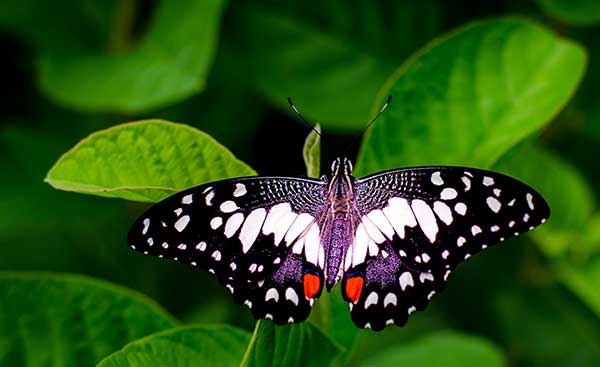
When we think of butterflies, we often picture beauty and grace, but there is more to them than meets the eye. These delicate creatures are powerful bioindicators, meaning their presence or absence can reveal a great deal about the health of the environment.
Because butterflies are sensitive to changes in climate, pollution, and habitat, they act like nature’s early warning system. When something is wrong, they show it. By monitoring butterfly populations, we can identify problems in local ecosystems early and take action before it is too late. Simply put, watching butterflies helps us protect the bigger picture.
Understanding Butterflies as Bioindicators
A bioindicator is a living organism that gives us clues about the health of the environment. It functions like a living report card. When certain species thrive or disappear, they are signalling important changes. Butterflies are excellent bioindicators because they respond quickly to environmental shifts.
They react to temperature fluctuations, pollution levels, and changes in the availability of plants. Since they rely on specific host plants and have short life cycles, even small disturbances in their habitats can lead to noticeable drops in their numbers. This makes them easy to study and track over time, particularly in areas where scientists, teachers, or students monitor the local environment.
Research has shown that declining butterfly populations often indicate larger issues such as habitat loss or pesticide overuse. Their presence, or absence, can serve as an early sign that something in the ecosystem is under stress.
That is why programs like colas (Community Outdoor Learning Areas) are so valuable. Schools and local groups can use COLAs as small field stations to observe butterflies and gather data. It is a simple yet powerful way to engage students in science while helping to monitor local ecological health.
Ecosystem Insights from Butterfly Populations
When a habitat is healthy, it is reflected in its butterfly populations. Both species diversity and abundance tend to be high, indicating good habitat quality characterised by a rich variety of plants, clean air, and stable microclimates. When butterfly numbers drop or only a few generalist species remain, it is often a warning sign.
Butterflies reveal environmental stress clearly. Pesticide use can wipe out sensitive species while leaving only those that tolerate chemicals. Climate changes, such as hotter or drier periods, may reduce breeding success or kill larvae. Habitat fragmentation or loss breaks up the landscape, isolating populations and preventing migration. Studies of urban areas show that as development increases, butterfly richness and abundance decline sharply.
One of the clearest examples is the monarch butterfly. Its populations have fallen in recent decades because milkweed, the primary food source for caterpillars, has been disappearing due to herbicide use, land-use changes, and climate pressure. This gives conservationists a direct lens into broader ecosystem stress.
The COLA Model: School Grounds as Monitoring Zones
Imagine a schoolyard not just as a playground but as a living laboratory. That is the idea behind colas (Community Outdoor Learning Areas): transforming school grounds into ecological monitoring zones where students and researchers can observe nature close to home.
With a COLA, teachers can incorporate butterfly monitoring into their lessons. They can plant native nectar sources and host plants, set up simple transects, and record which species visit the campus. Over the weeks and seasons, students can document sightings, take photos, record changes, and share the data with wider monitoring networks.
The benefits are twofold. Students gain practical experience in ecology, data collection, and critical thinking while researchers receive valuable citizen science data from numerous small sites across a region. Studies show that community-based butterfly monitoring helps detect environmental shifts early.
As a successful example, schools in some US districts have created garden classrooms that double as pollinator monitoring plots. At one elementary school, students observed fewer butterfly visits after nearby pesticide spraying, prompting changes in the school’s garden management practices. This kind of direct observation encourages both learning and environmental stewardship.
COLAs enable schools to become caretakers of their local ecosystems, giving nature a stronger voice through student participation and awareness.
Implementing Butterfly Monitoring Projects
Starting a butterfly monitoring project does not need to be complicated. Here is a simple guide:
Choose your site wisely. Select a safe, accessible patch such as a school garden, park edge, or hedgerow that contains flowering plants and host plants for caterpillars.
Learn your local species. Use field guides or online resources to identify butterflies native to your area. Begin with a few common species before expanding your knowledge.
Set a survey method and schedule. A common method is a transect count, where observers walk a fixed route and count butterflies within a set area. Repeat the count weekly during good weather to build consistent data.
Use tools and record your data. Apps such as iNaturalist or eButterfly allow users to photograph, identify, and log sightings. Even short counts, for example 15-minute surveys, can provide valuable data.
Engage students and volunteers. Encourage participants to help with walks, photography, and data uploads. This fosters community involvement while covering more ground.
Over time, these observations reveal trends such as species appearing or disappearing, or changes in numbers between good and bad seasons. Together, these trends help us understand ecosystem shifts and potential causes.
Small Wings, Big Warnings
Butterflies are more than beautiful creatures. They are vital messengers from the natural world. When we observe and record them carefully, we gain insight into the overall health of the ecosystems we depend on. Protecting butterflies means protecting the intricate web of life they represent. By paying attention to their small wings, we hear the big warnings nature is sending us.
Next up…




